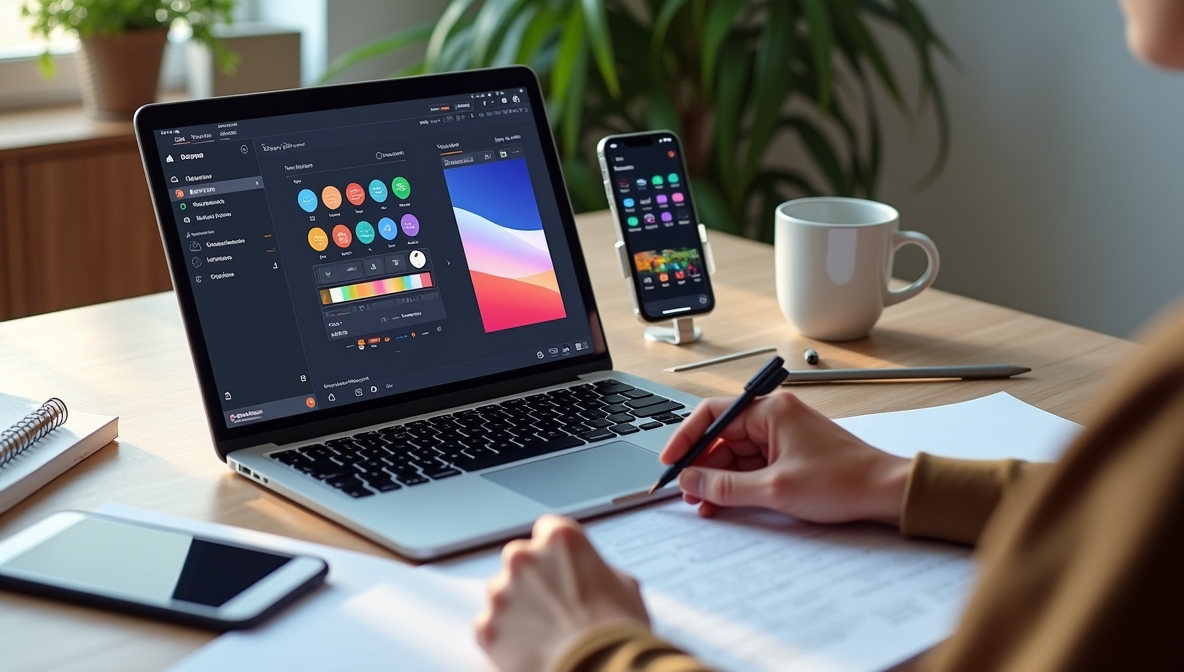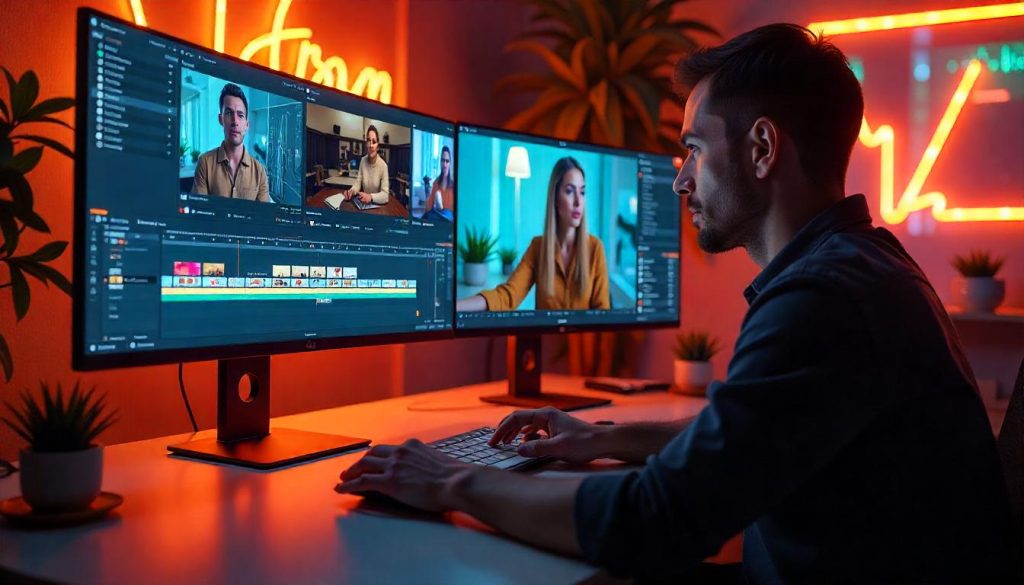Ever feel stuck staring at a blank canvas when designing visuals? With AI design tools, you can now turn simple ideas into polished graphics in minutes. These smart tools aren’t just for professionals they’re built for creators, marketers, and entrepreneurs who want to design faster and smarter. In this guide, you’ll discover how platforms like Canva AI, Figma, and Adobe Firefly are transforming the creative process. From intuitive interfaces to intelligent suggestions, these tools help you save time and elevate your visual content. Curious how to choose the right one and boost your design flow? Keep reading you’re about to level up your creativity.
Fotor AI: Simplify photo editing and design with smart tools
Fotor AI has quickly become a favorite for fast, high-quality photo edits and graphic creation. Its clean interface makes it easy to use, but the real magic comes from its AI-driven features. These include one-click background removal, AI portrait retouching, and AI art generation, which can transform plain images into stunning visuals in seconds.
Need to create social media graphics, ads, or quick product photos? Fotor’s AI tools speed up the process by enhancing images automatically, suggesting layouts, and even generating unique art styles based on your brief. For creators, marketers, or entrepreneurs working solo, it’s like having a photo editor and designer rolled into one.
“Fotor AI helps you turn simple shots into scroll-stopping visuals instantly.”
The platform also supports batch processing, allowing users to edit multiple photos at once with consistent results. This is a huge advantage for businesses managing large catalogs, influencers producing regular content, or agencies that need efficiency without sacrificing quality.
Designs.ai: All-in-one creative suite powered by intelligence
Designs.ai is known for being a complete AI-driven creative platform that brings multiple tools into one ecosystem. It doesn’t just focus on graphics it also offers AI video creation, voiceovers, logo design, and mockups, giving users everything they need to build brand assets fast. Its AI workflow suggests layouts, styles, and even generates ready-to-publish content from simple text prompts.
Imagine typing “Create a modern tech brand kit with logo, business card, and promo video,” and getting professional outputs in minutes. That’s the edge Designs.ai provides. It helps entrepreneurs, agencies, and small businesses reduce costs while maintaining a professional look across every channel.
“Designs.ai turns your brand vision into complete campaigns in record time.”
The suite also integrates smart automation for content scaling. Users can generate dozens of branded visuals or marketing videos in bulk, ensuring consistency while saving hours of manual effort. For busy teams and startups, it’s like hiring a full creative agency backed by AI.
Adobe Firefly: Professional creativity unleashed by Ai
Adobe Firefly brings generative AI directly into the Adobe ecosystem, providing creators with tools to produce high-end visuals using simple text prompts. You can generate custom images, style text effects, and experiment with different design concepts all within the Adobe environment you already use.
What sets Firefly apart is its focus on commercial use. The images generated are safe to use commercially, thanks to Adobe’s training model based only on licensed and public domain content. This makes it ideal for agencies, marketers, and businesses needing both quality and compliance.
One of its standout features is the ability to generate images that match specific design styles. For instance, you can create visuals that mimic watercolor, vector art, or photography styles, allowing for rich, brand-aligned content generation.
“Adobe Firefly turns creative briefs into polished assets with professional-grade results.”
With integration into Photoshop and Illustrator, designers can blend AI-generated elements with traditional workflows. This hybrid approach enables speed without compromising craftsmanship.
Key benefits of using Ai in visual design
AI tools save time, reduce repetitive tasks, and help designers focus on creativity rather than execution. These tools also make high-quality design accessible to non-designers. Whether you’re a marketer, solopreneur, or startup founder, AI lowers the barrier to entry and lets you produce visuals that once required advanced skills.
- Faster design cycles and iteration
- Improved consistency and brand alignment
- Access to professional-grade outputs with minimal training
Common use cases for creators and teams
Smart AI tools are now used across industries from ecommerce and education to content marketing. Here are some real-world use cases:
- Social Media Creators: Quickly generate batches of branded content
- Marketing Teams: Produce ad visuals, banners, and email graphics on demand
- Product Designers: Mock up UI components and test user flows faster
- Educators: Build visual aids, infographics, and engaging slides
How to choose the right Ai design tool
Choosing the right AI design tool depends on your goals, workflow, and team structure. Here are a few tips to guide your decision:
- Assess your needs: Are you focused on social media, UI design, or branding?
- Check integrations: Make sure the tool works with your existing software (like WordPress, Slack, etc.)
- Consider ease of use: Tools like Canva and Designs.ai are beginner-friendly, while Firefly suits experienced creatives.
Remember, the best tool is the one that enhances your creativity and fits naturally into your existing workflow.
AI design tools like Canva AI, Figma, and Adobe Firefly are reshaping the future of creativity. They empower you to design quickly, collaborate smarter, and bring ideas to life with less effort and more impact. Whether you’re building social media visuals or full design systems, AI simplifies the workflow without compromising on quality. Ready to take your visual content to the next level? Explore each tool further and discover which one fits your creative style. Don’t forget to check out our related articles for deep dives into each platform you’re just getting started on your AI-powered design journey.




